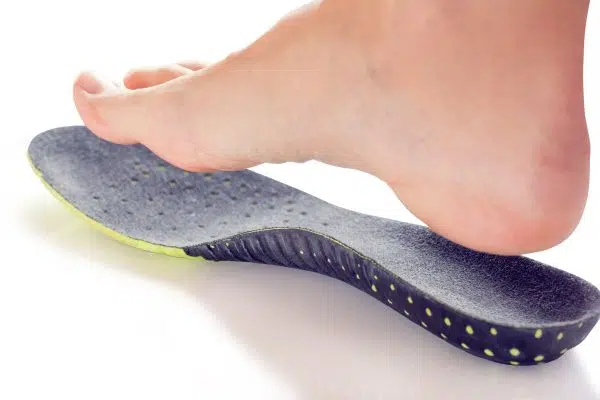To manage and treat most of the lower limb conditions, the function of a person’s foot ought to be addressed. With the help of latest 3D scanning technology, a patient’s foot can be captured in the highest and most accurate details. The latter use their years of experience to properly assess the patient’s foot and, as such, foster a prescription to treat the problem and ensure optimal foot function. At Optimum Care Foot and Ankle Clinic we devote sufficient time to fit the devices to ensure the highest level of comfort.
The orthotics will improve the function of your foot. By improving the function of the foot, they also change the function of the muscles within your foot and the muscles entering the foot from the leg. In addition, by altering how much the foot rolls in, they also alter how the leg is positioned. Because of these changes in muscle function and leg position, it is important you break into your orthotics gradually. Otherwise you may experience foot, leg, knee or hip pain.
Adaptation
You should only wear them one hour on the first day, two hours on the second, three hours on the third and so on. On the eighth day you may begin wearing your orthotics full time.
You should not wear your orthotics while running or participating in other sports until after the first week and you are finding them comfortable for walking. After your one-week break-in period you should wear your orthotics as much as you can for the next two weeks.
It is normal for the orthotics to feel a bit odd at first. However, if at any time during the break-in period you experience pain that lasts for more than a day in your ankles, knees, hips, or back you should stop wearing the orthotics and call your Podiatrist.
Shoes
The importance of shoes cannot be over-emphasised. The best orthotics in the world will be ineffective unless you wear them in the correct shoe. In order for your orthoses to work properly, they must sit on a stable base – thus a stable shoe is imperative.
The area on the back is called the Heel Counter. The heel counter must be stable in order to support your foot and the orthotic. Try the “two-finger test”, grabbing the heel counter between two fingers, you should not be able to squeeze in. If you can, then the shoe is not stable enough for you. The shoe should also be very stable torsionally – the front of the shoe should not twist easily on the back part. Also, make sure the shoe bends where your toes bend. Shoes should naturally bend where your toes bend – not in the middle of the shoe. The shoe should also be firm in the area called the medial – or inside – mid-sole. A firm mid-sole will prevent the shoe from collapsing underneath your foot.
The shoe manufacturers offer an endless variety of shoe types. Running shoes traditionally have the best technology built into them and usually make for the best walking shoes – particularly for exercise walking.
Placing the Orthotics in the Shoe
When you are preparing to place your orthotics into your shoes, first remove the insole from the shoe. Most quality shoes now come with a removable insole. To give cushion under the ball of your foot, you could replace the shoe insole with a flat insole. The orthotics is then placed on top of the new insole. Make sure that the heel sits all the way back against the heel of the shoe.
When to Replace Shoes
A quality shoe will provide adequate support for only about 650 kilometres. After this amount of wear the ability of the shoe to support your foot will decrease dramatically. If you are wearing a shoe on a daily basis, then you will get no more than about 8-12 months of good support. The shoe may still look to be in good shape but after this much time, the foams in the mid-sole lose their ability to “bounce back” after you take a step. Replacing your shoes on a regular basis is one of the most important things you can do for your foot health.
Follow-Up
Following your one-week break-in period and two weeks of wearing your orthotics full time, you will return for a follow-up appointment. We may also add additional therapies to help relieve your symptoms. Remember, our goal with orthotics is only to improve your foot function – they are not a magical cure-all for foot problems. Do not expect more than 20% improvement of your symptoms in the first 3 weeks. You may need additional treatment to reduce inflammation or help you heal. Additional treatment may include medications, exercises and stretching, physiotherapy or shoe modifications.
Contact Optimum Care Foot and Ankle Clinic – Richmond Portraitist on 03 9077 5915 to get you feet assessed now.

